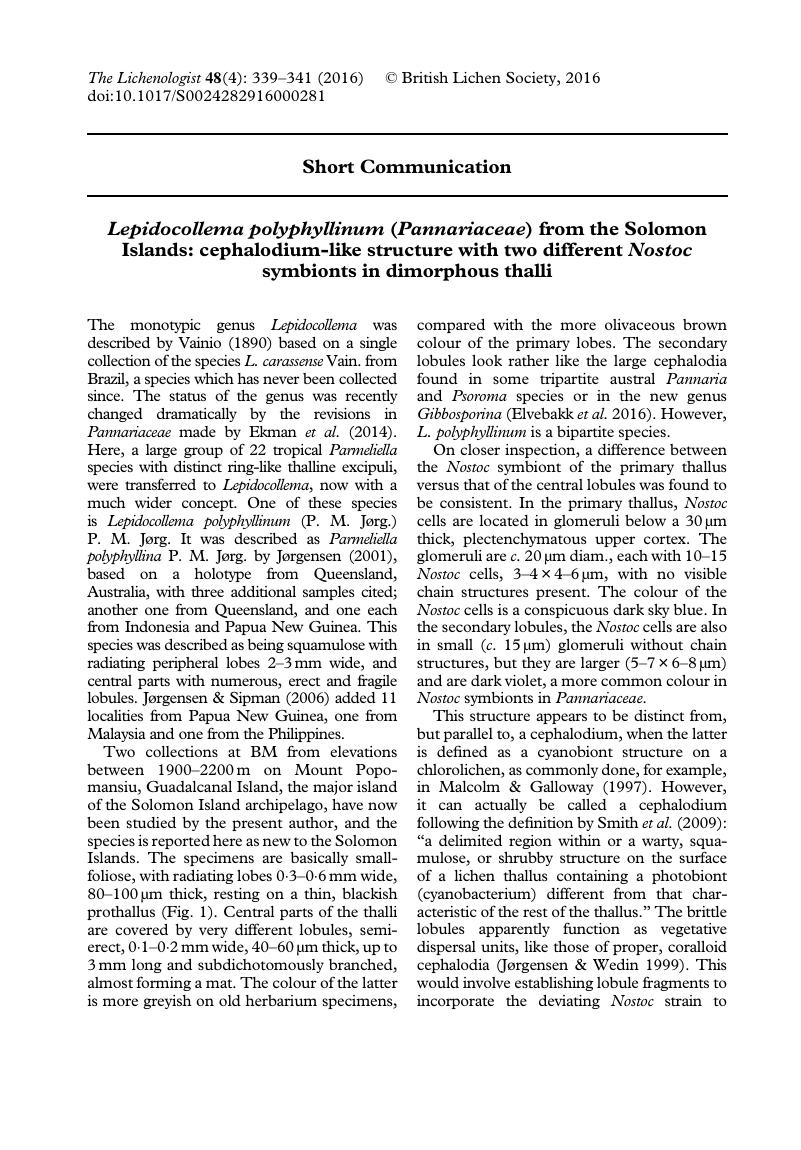Crossref Citations
This article has been cited by the following publications. This list is generated based on data provided by Crossref.
Lendemer, James C.
2017.
Recent literature on lichens—244.
The Bryologist,
Vol. 120,
Issue. 1,
p.
97.
Elvebakk, Arve
and
Tønsberg, Tor
2018.
Psoroma spinuliferum(Pannariaceae),a new corticolous lichen species from Alaska with two different types of cephalodia.
The Bryologist,
Vol. 121,
Issue. 2,
p.
166.
Elvebakk, Arve
2021.
Gibbosporina cyanea (Pannariaceae), a new bipartite cyanolichen from Sri Lanka with comparisons to related palaeotropical cyanogenera.
The Lichenologist,
Vol. 53,
Issue. 4,
p.
291.
García-Breijo, Francisco J.
Molins, Arantzazu
Reig-Armiñana, José
and
Barreno, Eva
2023.
The Tripartite Lichen Ricasolia virens: Involvement of Cyanobacteria and Bacteria in Its Morphogenesis.
Microorganisms,
Vol. 11,
Issue. 6,
p.
1517.



